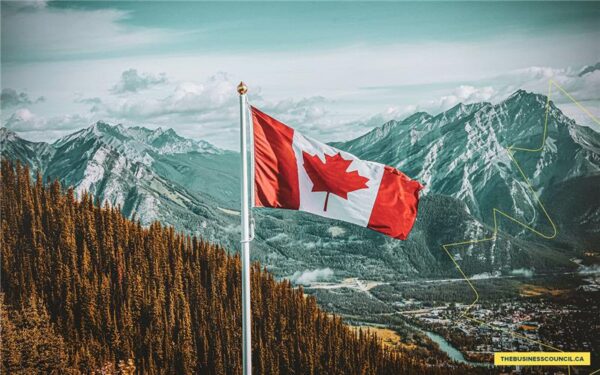Ottawa needs to step up to make Indigenous economic reconciliation a reality
As published in the Toronto Star
Fred Di Blasio is a walking, talking embodiment of where economic reconciliation is at right now.
He is an Indigenous investment banker armed with lots of personal experience, good will and a solid board of directors, on a challenging hunt for capital and know-how.
He makes an impeccable case in favour of private and public-sector financing so that First Nations investors can take equity stakes and a role in corporate decision making, especially when it comes to the energy transition.
“We are here at the table,” says Di Blasio, co-founder and chief executive officer of Longhouse Capital Partners and a member of the Huron-Wendat Nation.
But it’s a long slog.
Sept. 30 marks the third National Day for Truth and Reconciliation. It’s a day to reflect on the tragic legacy of residential schools. It’s also a day to commit to full reconciliation, as outlined by the Truth and Reconciliation Commission (TRC) — and we all have a role to play.
When it published its 94 sweeping calls to action in 2015, the TRC had some particular demands for corporations: commit to meaningful consultation with Indigenous Peoples, and ensure they not only have access to jobs and training, but are also fully engaged.
Fast-forward eight years, and that call to action has come to mean that it’s high time business leaders, political decision-makers and Indigenous investors figure out how to put those directions to work. In the past, that’s meant mainly jobs, training and impact-benefit agreements. Nowadays, in many cases, it also means designing deals where Indigenous investors can buy equity, lots of it, and become deeply ingrained in the business at hand.
There are some success stories.
A year ago now, Enbridge announced a deal to sell an 11.7-per-cent stake in its Athabasca pipelines to a group of 23 First Nations for $1.12 billion.
Hydro One has rolled out an equity strategy to offer First Nations a 50-per-cent equity stake in large transmission projects.
Six Nations of the Grand River Development Corp., is in a joint venture with NRStor to develop the massive Oneida energy storage project in southern Ontario.
Alberta, Saskatchewan and Ontario have loan guarantee programs that — although not perfect — at least allow some First Nations to access financing and negotiate better rates than otherwise possible, opening the door to further Indigenous-led investment.
And yet recent polling of Indigenous populations by Earnscliffe Strategies suggests that just three per cent of respondents see “a lot of progress” on economic reconciliation, and 29 per cent see “some progress.”
Struggle to borrow money holding them back
That’s unfortunate, because the same poll showed that more and more respondents see the Indigenous standard of living deteriorating — a reflection of the chronically low income levels in some communities.
We have a moment right now to seize the initial momentum in Indigenous investment and run with it.
Indigenous communities have set up effective economic development arms — some of which manage over a billion dollars — to better structure their financial heft.
Corporate leaders are looking for Indigenous partners and board members, pushed by a growing realization that partnering with Indigenous investors can lead to social license, diversity and creativity in the way business is done, and eventually a competitive advantage.
Collaboration is held back, however, by a struggle to borrow money. Di Blasio’s pitch for access to capital at competitive rates is a tough one when he comes to the part about his firm being new, without a long track record to brandish.
While some provinces have stepped up with loan guarantees, and the federal government has earmarked $1 billion in the Canada Infrastructure Bank to partner with Indigenous communities in infrastructure development, there is no full national vision.
That’s why there is a growing consensus among Indigenous investors, corporate leaders and government decision makers alike that federal loan guarantees are a solution whose time has come.
Indian Act makes borrowing difficult
The First Nations Major Projects Coalition as well as the Business Council of Canada have been on the case, arguing that the Indian Act essentially prevents First Nations from borrowing against their assets or land, making financing for even the best-laid plans extremely difficult to obtain.
A federal loan guarantee would bridge the gap between what markets would lend and what Indigenous investors need to take meaningful stakes in projects and ventures across the country, Di Blasio adds.
By all accounts, federal officials are hard at work designing a financing facility that could, at least in part, meet the need. But they may also be considering designating the financing for certain sectors, effectively excluding oil and gas. That kind of restriction curtails the options for Indigenous communities based near those projects, and reeks of the same kind of micromanagement that got us here in the first place.
The country’s infrastructure needs and the energy transition are desperate for investment, and full Indigenous participation is an absolute must if Canada’s economy is going to adapt to, and mitigate against, climate change.
The bounty that the federal government trumpets so loudly both here and overseas as a selling point for Canada — the critical minerals, the hydroelectric capacity, the natural resources and the know-how — needs the full inclusion of Indigenous communities in order to work.
We’re almost there, and with a carefully designed financing facility, we can collectively take a big step toward the economic reconciliation the TRC had in mind.











